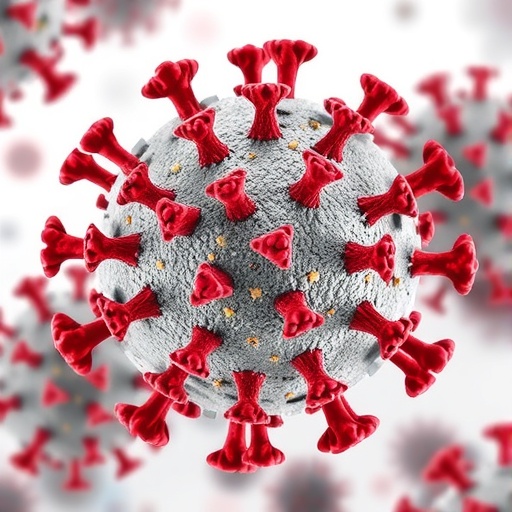The Wyss Center in Geneva is set to work with Brown University on a US Defense Advanced Research Projects Agency (DARPA) program to develop a high-resolution, implantable neural interface network for new medical therapies.
The program will develop a next-generation implantable network of thousands of miniature neuro-sensors and stimulators to boost understanding of the brain and provide therapies for sensory restoration.
The international team of engineers, neuroscientists and physicians involved in the project aim to create a 'cortical intranet' of tens of thousands of wireless micro-devices – each about the size of a grain of table salt – that can be safely implanted onto or into the cerebral cortex, the outer layer of the brain.
The implants, dubbed 'neurograins', will operate independently, interfacing with the brain at the level of a single neuron. The activity of the devices will be coordinated wirelessly by a central communications hub in the form of a thin electronic patch worn on the skin or implanted beneath it.
The system will be designed to have both 'read-out' and 'write-in' capabilities. It will be able to record neural activity, helping to deepen scientists' understanding of how the brain processes stimuli from the outside world. It will also have the capability to stimulate neural activity through tiny electrical pulses, a function researchers hope to eventually use in human clinical research aimed at restoring brain function lost to injury or disease.
Professor John Donoghue Director of the Wyss Center in Geneva said: "These smart, connected grains will present an entirely new way to interact with the nervous system. They would provide a foundation for future treatments of sensory deficits. They could also enable simultaneous real-time monitoring of physiological parameters such as pressure and temperature from multiple locations across the body."
The Wyss Center's role in the project is to develop novel implantable, corrosion resistant encapsulation materials that will be readily accepted by the body and in the longer term to support the regulatory procedures and early human clinical trials of the new system.
Claude Clement, Chief Technology Officer at the Wyss Center in Geneva said: "The microfabrication and electronics challenges presented by this innovative project are pushing neuroengineering to new levels. At less than one mm in length, the proposed neurograins require miniaturization beyond that found in any existing devices today. We are also working on the challenges of biostability – the units must be exceptionally leak- and corrosion-resistant for successful lifetime use."
The research team will also include researchers from Brown, IMEC (a Belgian microtechnology institute), Massachusetts General Hospital, Stanford University, the University of California, Berkeley, the University of California, San Diego, and the mobile telecommunications firm Qualcomm. The funding, to be distributed over four years, comes from DARPA's new Neural Engineering System Design (NESD) program, which aims to develop new devices 'able to provide advanced signal resolution and data-transfer bandwidth between the brain and electronics'.
"What we're developing is essentially a micro-scale wireless network in the brain enabling us to communicate directly with neurons on a scale that hasn't previously been possible," said Arto Nurmikko, L. Herbert Ballou University Professor of Engineering at Brown and the project's principal investigator. "The understanding of the brain we can get from such a system will hopefully lead to new therapeutic strategies involving neural stimulation of the brain, which we can implement with this new neurotechnology."
Such a concept of multifunctional neural implants, capable of long-term in vivo monitoring of the brain and body, has truly disruptive potential for the medical device industry.
###
About the Wyss Center for Bio and Neuroengineering
The Wyss Center provides the resources, facilities and expertise required to bridge the gap between creative neuroscience research and clinical products for human benefit.
Based at Campus Biotech in Geneva Switzerland, the Wyss Center offers competitively awarded project funding for innovative neurotechnology research projects that have the potential to make substantial impact.
The Center provides access to advanced neuroscience and engineering facilities, as well as the integrated clinical, regulatory and business resources required to guide high risk, high return projects on their journey from research to product.
The Wyss Center's unique interdisciplinary team of specialists, including research scientists, engineers, regulatory experts, business development specialists and clinicians, help to develop the products that will prevent, diagnose or treat nervous system disorders, or will lead to useful technology with the potential to improve lives.
The Center will support highly innovative neurotechnology projects from anywhere in the world as long as they fit the core mission to accelerate the development of neurotechnology for human benefit and can make full use of the Center's capabilities and resources.
A major goal is to ensure that innovative neurotechnologies advance until they are sufficiently mature to attract corporate partnerships, venture funding, or other mechanisms necessary to make them broadly available to society.
Established by a generous donation from the Swiss entrepreneur and philanthropist Hansjörg Wyss, the Wyss Center is a partner in a progressive new neuroscience hub being developed at Campus Biotech which includes neuroscience and engineering faculty from Ecole Polytechnique Fédérale de Lausanne (EPFL), University of Geneva (UNIGE), the Hospital of the University of Geneva (HUG) and the EU Human Brain Project. http://wysscenter.ch/
Media Contact
Jo Bowler
[email protected]
41-079-861-1068
@Wysscenter
http://www.wysscenter.ch
http://www.wysscenter.ch/en/wyss-center-joins-19m-project-to-engineer-brain-computer-interface-network/




